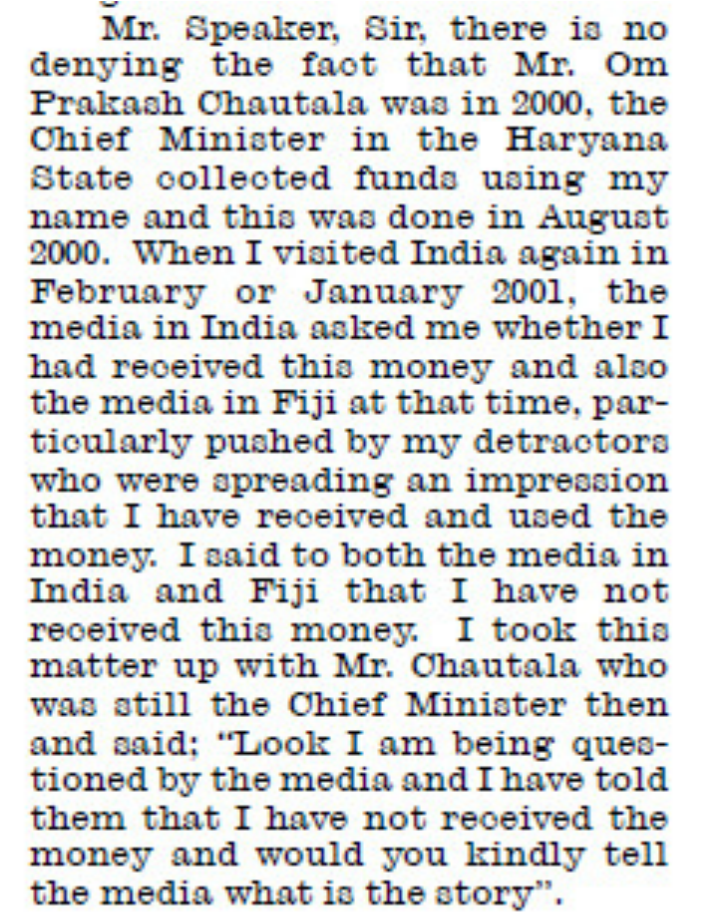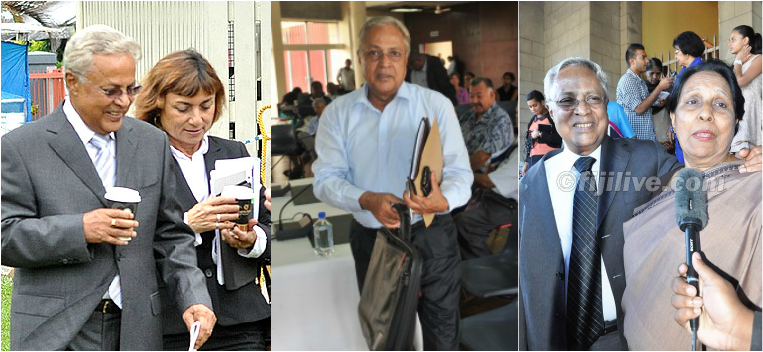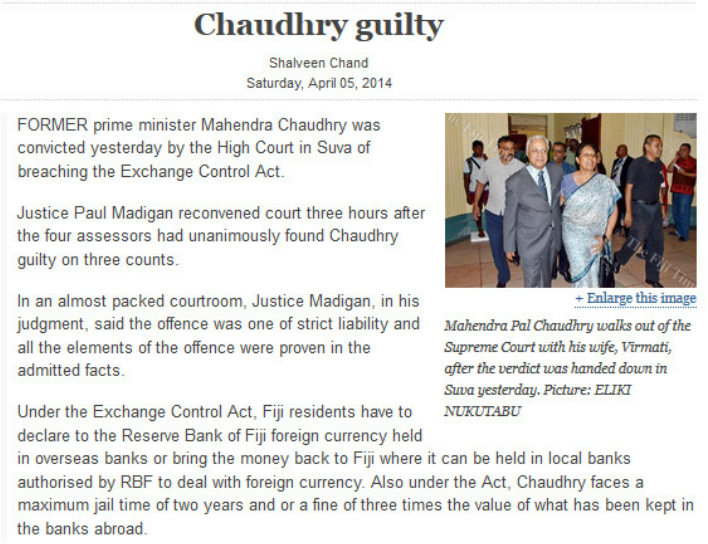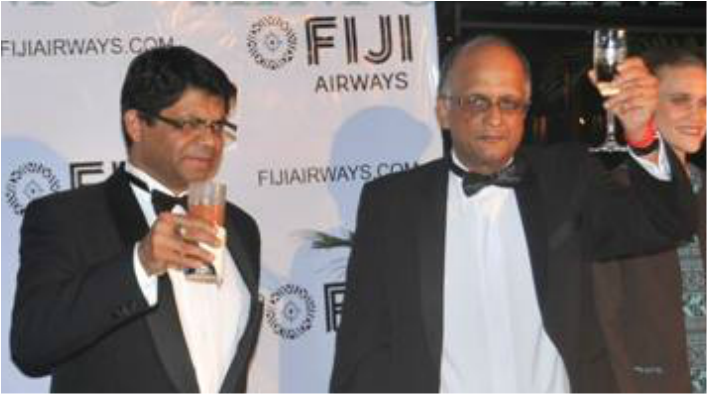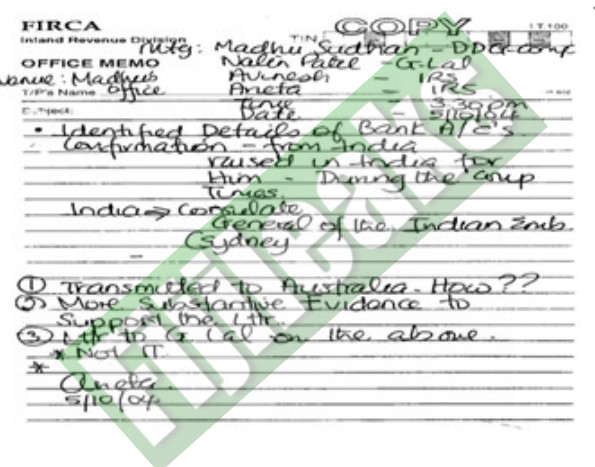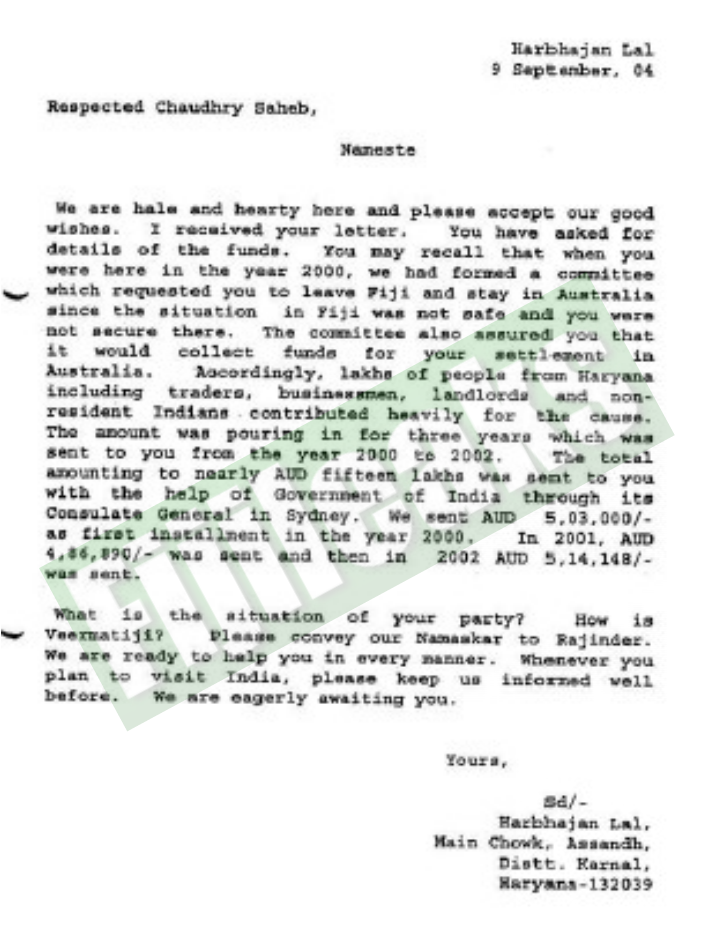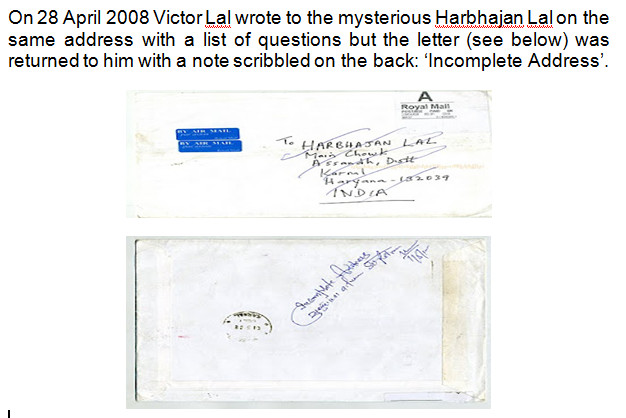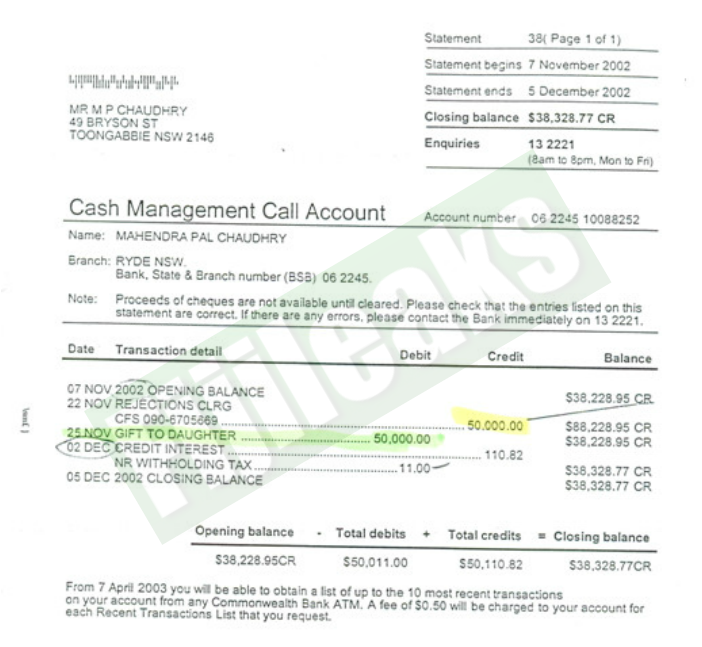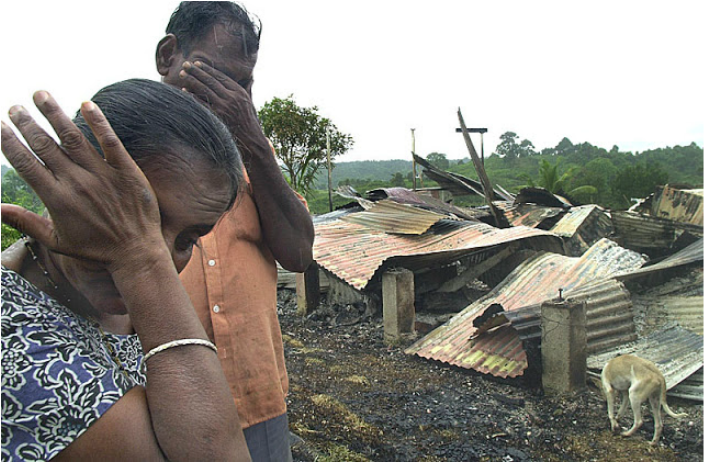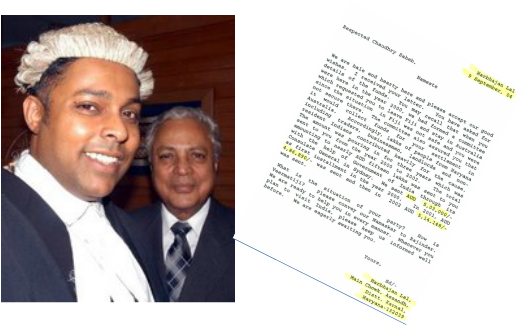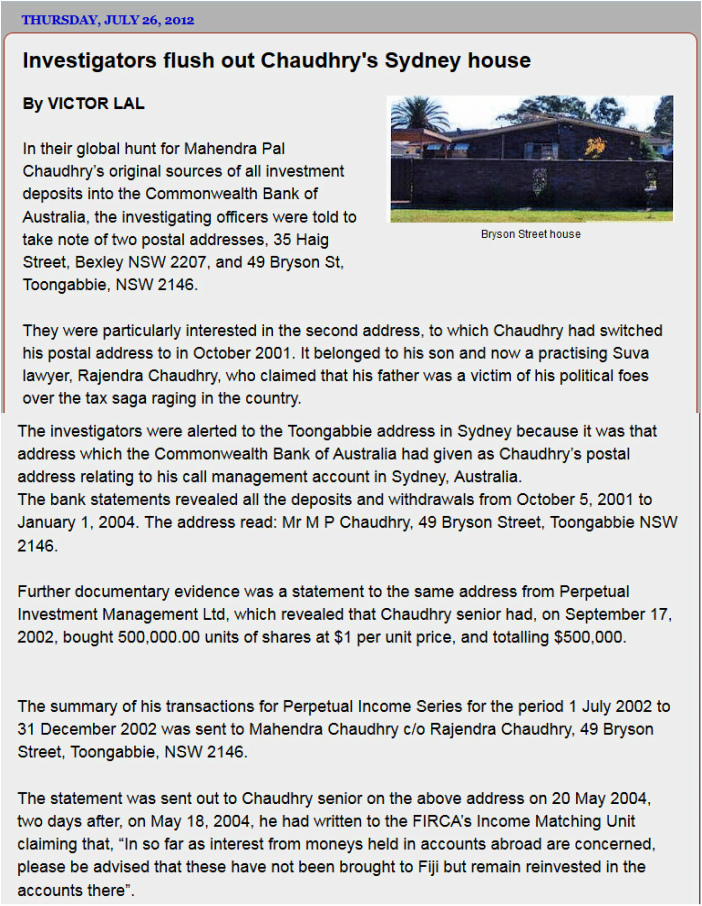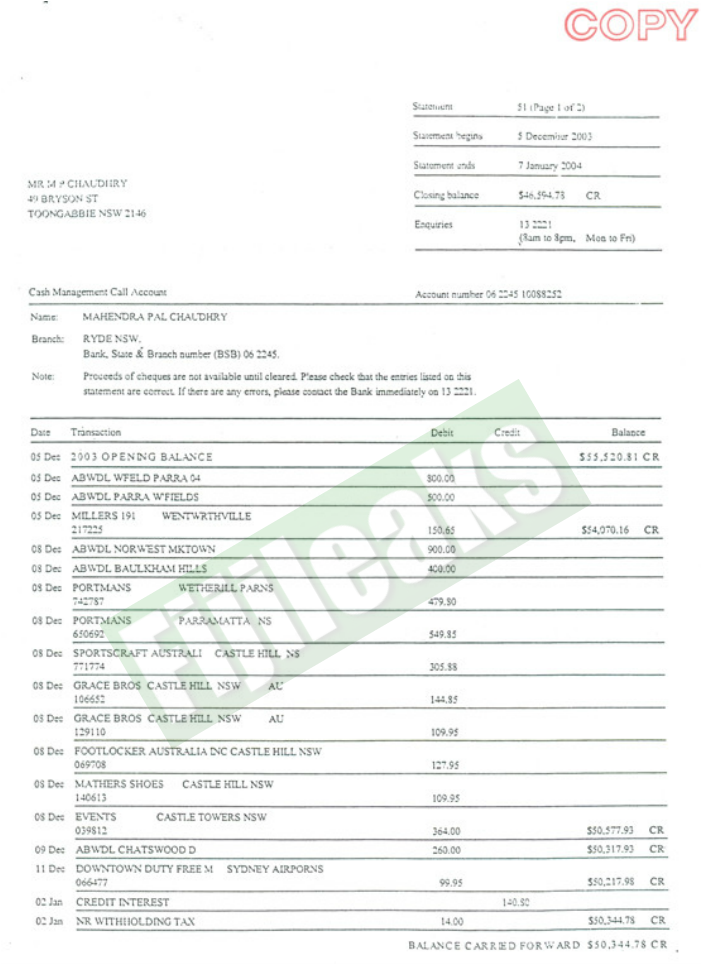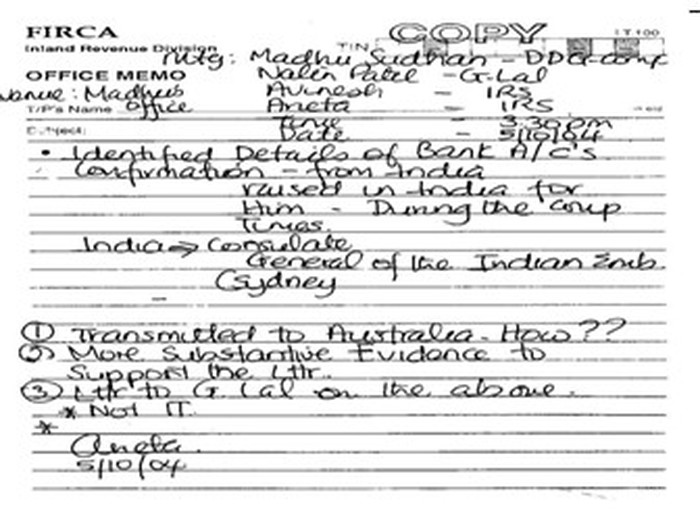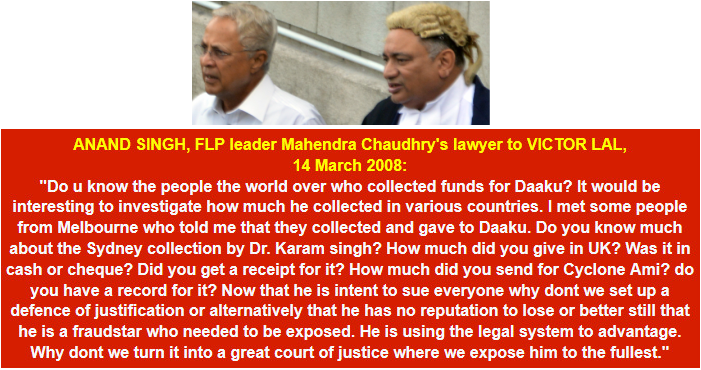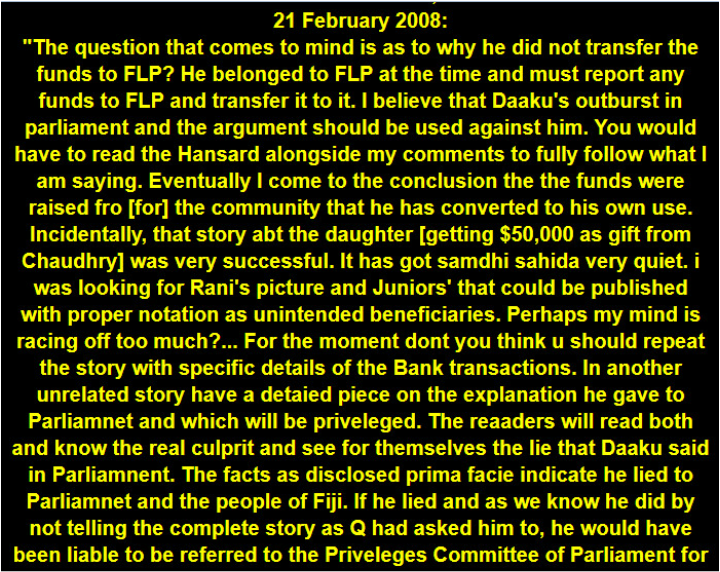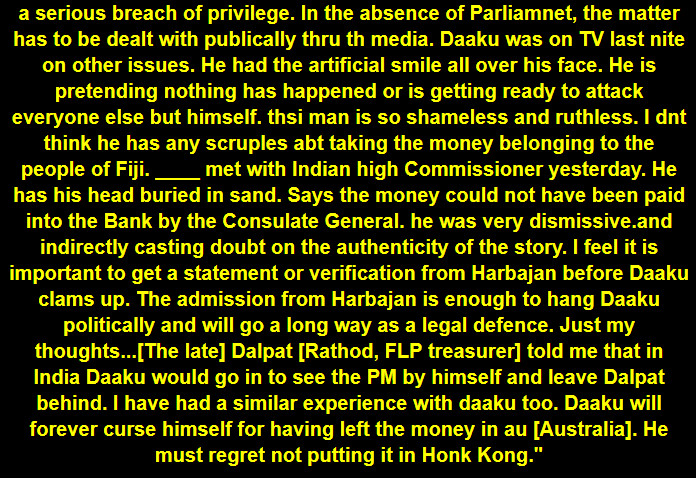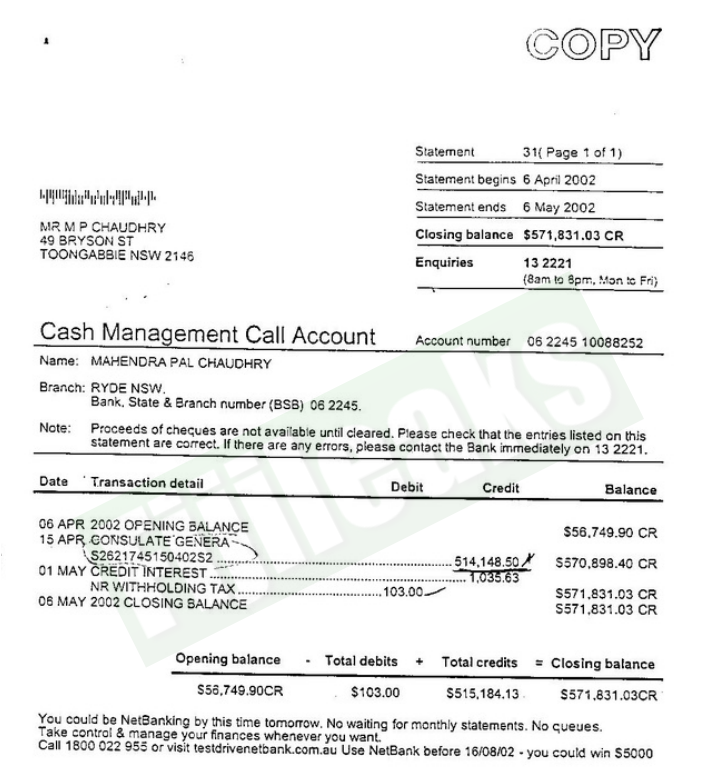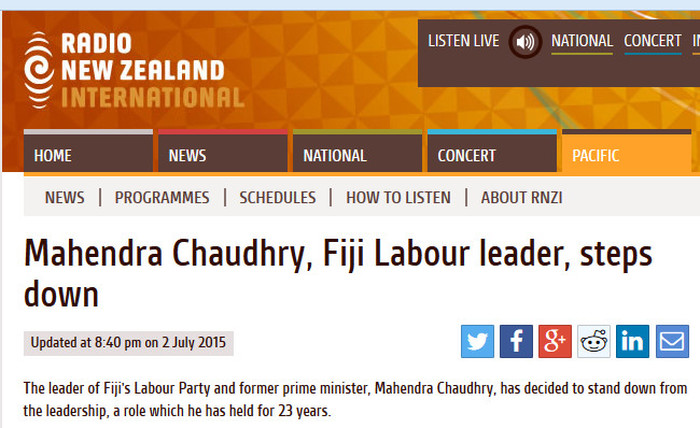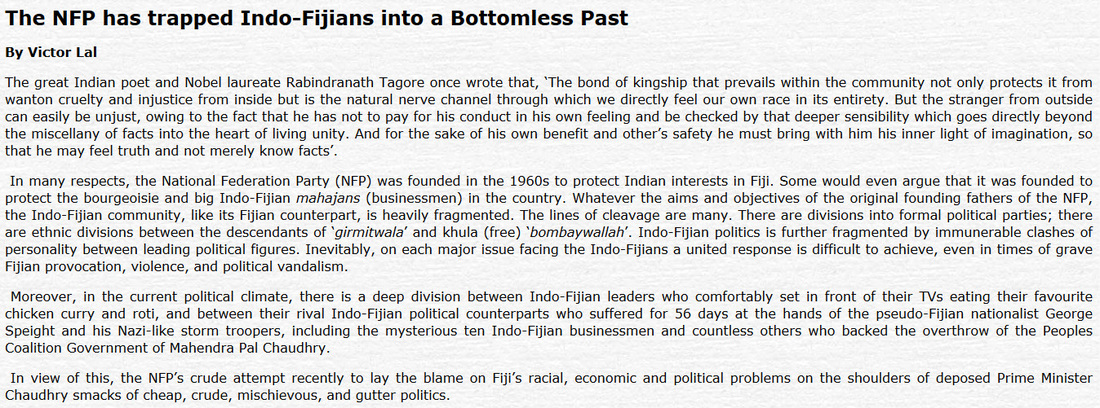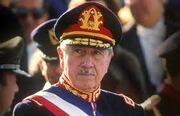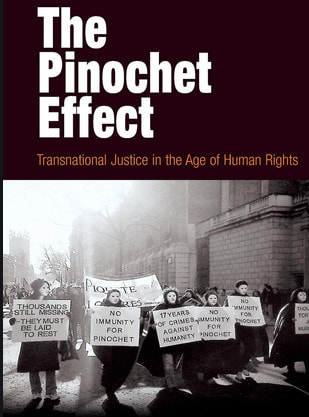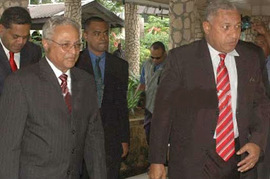 Political buddies after the 2006 coup - as treasonist Frank Bainimarama's Interim Finance Minister
Political buddies after the 2006 coup - as treasonist Frank Bainimarama's Interim Finance Minister Mr Chaudhry has been involved in the party since its inception in 1985, and was elected prime minister in 1999, but was overthrown one year later in a coup led by George Speight.
After the 2006 coup, Mr Chaudhry joined Frank Bainimarama's interim government as finance minister, but resigned two years later.
The party failed to gain any seats in parliament at last year's election, and Mr Chaudhry was prevented from campaigning after he was convicted for breaching the Exchange Control Act.
Mr Chaudhry says it's not the end he would have liked to his career, but he feels the time is right to step down.
"I have led the party a long time, 23 of its 30 years in existence. But I think it's time also, I'm getting on in years, it's time that the party should seriously consider new leadership."
Mahendra Chaudhry says he will remain involved with the party to help the next leader,
But Mr Chaudhry says both he and the party have been victims of campaigns by the Bainimarama regime to eliminate the party, and it will one day return to its former strength.
"Well the party is there, the Labour Party will recover and I will assist the party, I will remain with the party and I'm sure we will be able to build it back to what it was."
A new leader will be appointed at the party's conference next month. Source Radio New Zealand International
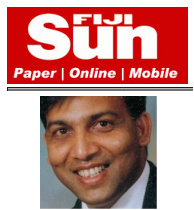
BY VICTOR LAL
Fiji Labour Party needs leadership change
In another country, the Leader of the Opposition after loosing a parliamentary election for the second time in his political career might have gracefully stepped down. Even if the leader lost with a razor-thin minority, it is never prudent for him to cling onto the leadership. Such a practice is disdainfully frowned upon in most democratic systems, except in Africa, where dictatorial leaders hold onto party leadership in the hope of capturing power at the next election.
On the other hand, if the twice-defeated party leader in a western-style democracy refuses to relinquish control, he is humiliatingly forced out of the Opposition office through a ‘palace coup’ by one or some of his colleagues, supporters, or by a potential challenger.
Why should the Fiji Labor Party change its leader? Firstly, Mahendra Pal Chaudhry had his chance in 2001, and now again in the 2006 general election, to wrest political control of the nation from the Laisenia Qarase-led SDL party, but has failed. This should be sufficient ground for him to take a parliamentary back seat, and let another Fiji Labor Party parliamentarian take the helm. As his deputy Poseci Bune indicated during the campaign, there are parliamentarians in the party who have the clout and the experience to even become Prime Minister.
Secondly, I still believe that it was a strategic blunder on the part of Mr. Chaudhry to have boycotted Parliament for a long spell over the issue of the allocation of Cabinet portfolios following the 2001 elections. I pleaded with him [through my Fiji Sun political column] to be visibly and vocally present in Parliament while continuing to pursue his legal case but it was to no avail. After all, his new found coalition partner Mick Beddoes, had stepped in and did a sterling job as Opposition leader.
Mr. Chaudhry’s entire political posture on the land issue, despite his genuine concern for the Indo-Fijian tenant farmers, was a potential vote loser among the Fijian voters. It would be no exaggeration to suggest that its Coalition partner [Party of National Unity] PANU felt the full brunt of the Fiji Labor Party’s posturing on the land question at the ballot box. The SDL was able to privately persuade the Fijian voters that PANU would not hesitate to ‘sell’ the landowners in a post Chaudhry-led government. What other explanation can be put forward to explain why PANU was trounced in its own backyard in Ba and other western constituencies? Cynics will attribute it to the politics of preference sharing and the electoral system.
Thirdly, despite being frequently described as a wily and cunning old political fox and one of the shrewdest of political operators in the country, I think Mr. Chaudhry miserably failed to take the Fijian pulse and gauge the political tempo of the 2006 election. I was surprised that, having secured the Indo-Fijian communal seats through last-minute deals with the National Federation Party, he again popped up in the midst of electioneering to explain the alleged frauds and malpractices in terms of race i.e. that there was a sinister plot to disenfranchise the Indo-Fijian voters.
In the minds of many Fijian voters, he stamped an image of being a closet ‘Indo-Fijian nationalist and racist’, a charge that was frequently hurled at his political opponent and rival, Mr. Qarase. In view of the dramatic shift in population where Fijians are now a majority race in the country, it is very important for any non-Fijian political leader to pitch at the Fijian voters, even if it means ‘betraying’ a part of the Indo-Fijian constituents. Elections, after all, are about winning, and Mr. Qarase played his cards very cleverly and strategically. For example, once he forcefully made the point that Fiji was still not ready for an Indo-Fijian Prime Minister, his view, even if it was construed as racist, was relegated to the political backburner. Mr. Chaudhry did not have the same fall back opportunity. He still needed the Fijian voters to make up the winning numbers.
Worse, by speaking the counterfeit sudh (standard) Hindi, the Fiji Labor Party failed to reach the 30 per cent of Fijians who speak Fiji Hindi. These are just some of the reasons why I personally think it is time for Mr. Chaudhry to honorably relinquish the party leadership. And if he refuses to go, well, it is up to those parliamentarians with clout and experience to become the next Prime Minister, to come out of his political shadow.
Leaders and supporters come and go but the party has a life of its own.
There is nothing stopping Mr Chaudhry from becoming the elder statesman of the party that he helped found in 1985 with many visionary and multi-racialist Fijians. The Fiji Labour Party blunderingly placed all its political eggs in one basket: it calculated that if it won at least 30 seats, and PANU and UPP their share of seats, it would go on to form the next government. It was also hoping that the leader of the National Alliance Party, Ratu Epeli Ganilau, was going to win his seat until the NFP disclosed its preference against the paramount chief.
It also seems likely that the Fiji Labor Party had expected that Commodore Frank Bainimarama’s frightening and threatening statements might just persuade a sufficient number of Fijian voters to swing the results in the Fiji Labor Party-UPP-PANU’s favour. I had thought otherwise, that the Commodore’s intervention in politics would backfire on the Fiji Labor Party.
Why does the Fiji Labor Party need a new leader? There are other indisputable reasons.
This was the last general election where race really mattered. In 2011 the Fijians will be the majority of the voters, and fully groomed in democratic politics. For this reason, the Fiji Labour Party will have to broaden its outlook, and cannot rely on Indo-Fijian voters in the Open seats to win future elections.
When his own political obituary is written one day, Mr Chaudhry’s Fijian political rivals will sorely miss him: his towering and controversial presence on the political stage has so far welded the taukei Fijians into one political unit.
His presence has suppressed the politics of tribalism and regionalism so rampant on the continent of Africa, where their own ‘Chief Lutunasobasobas’, after expelling or marginalising the Asians (Indians) in their midst, are tearing their countries apart as they vie for political, economic, and military supremacy.
The Fiji Labor Party needs a complete political makeover if it is to win the next general election. It needs to attract significant taukei Fijian political ‘kai vatas’ of its own to achieve that goal. And the Indo-Fijian farmers will have to realise that in the rapidly changing demography they, and not their political representatives, will ultimately pay a price if they leave the decision on the land question in the hands of their new chosen Fiji Labour Party Members of Parliament.
The taukei Fijian landowners magnanimity and patience will finally run out on the politics of land leasing. And any new Fiji Labor Party leader must begin his leadership on that cautionary note. Edited Version.
TWO YEARS LATER, 2008: Victor Lal reveals Chadhury's secret $2million resulting in the abduction, detention, and deportation of Fiji Sun's then publisher and editor-in-chief Russell Hunter; now banned from FIJI!
In an e-mail dated 10 August 2007 Russell Hunter had advised Victor Lal to provide Chaudhry’s tax documents to the RBF Intelligence Unit. Victor Lal duly obliged and submitted his own legal opinion to the RBF that Chaudhry might have breached various provisions of the Exchange Control Act and the Proceeds of Crime Act. Like FICAC, the Prime Minister’s Office, and Chaudhry himself, the RBF neither replied nor acknowledged Victor Lal’s letter or the tax documents. After all, Chaudhry was the regime's Interim Finance Minister, in charge of the nation's financial purse.
BUT Bainimarama regime, Fiji Police, FRCA and DPP still PROTECTING Nalin Patel, the accountant who helped Chaudhry hoodwink FRCA!
The Unauthenticated Harbhajan Lal letter – Unanswered Questions!
What about the “Harbhajan Lal Letter” dated 9 September 2004, that Mr Chaudhry submitted through his tax agent, G. Lal & Co to FIRCA? Victor Lal has never accepted the Harbhajan Lal letter as conclusive proof that the $2million from India was for Mr Chaudhry’s resettlement in Australia but at the time of his investigation he had given Mr Chaudhry benefit of the doubt that the author of the letter was, indeed, one Harbhajan Lal of Haryana.
To date, we are yet to locate the mysterious Harbhajan Lal and Mr Chaudhry has not provided any further information on the author of the letter to FIRCA. He had instead paid the outstanding tax to prevent any further investigation into the “Harbhajan Lal letter.
There is clear evidence, however, that Mr Chaudhry (and Nalin Patel) presented to FIRCA the letter from someone calling himself Harbhajan Lal, the contents of which were false in part, most glaringly the opening paragraph of the letter which did not correspond with the bank statements from Australia that Mr Chaudhry (and his accountant Nalin Patel) offered to FIRCA.
Victor Lal had pointed out the discrepancy in 2008, which we repeat for your consideration:
“It is strange that FIRCA did not question Mr Chaudhry as to why he was inquiring from Harbhajan Lal about the details of the funds in 2004. We do not have on us the contents of the letter that Mr Chaudhry wrote to Harbhajan Lal but it does not take a feverish mind to point out that when Harbhajan Lal wrote that letter in September 2004, Mr Chaudhry had already received the three separate instalments of money from Haryana in 2000 ($503,000), 2001($486,890) and 2002 ($514,148.50).
The deposit of $486,890 on February 22, 2001 had swelled Mr Chaudhry’s bank account to over a million dollars. There is also evidence that the next day, on 23 February, Mr Chaudhry or someone with power of attorney on his behalf had made two withdrawals of $400,000 etc on the same day.”
2004: The questionable Harbhajan Lal letter to FIRCA – Forgery or Falsification of Facts?
16 June
FIRCA writes to Mr Chaudhry granting him extension till 15 August 2004 to provide information in relation to investments held overseas
14 August
Nalin Patel of G. Lal & Co writes on behalf of Mr Chaudhry to FIRCA asking for an extension till 15 September. Informs FIRCA that Mr Chaudhry has appointed him as his tax agent and confirms that the information was being completed
18 August
FIRCA grants extension
6 September
Nalin and Pardeep Patel of G. Lal & Co meet FIRCA’s Madhu Sudhan (now working with G.Lal & Co) and state that information would be submitted by 15 September 2004
9 September
Harbhajan Lal of Haryana or someone purporting to be him writes his letter to Mr Chaudhry regarding the funds collected in India
13 September
Nalin Patel writes to FIRCA asking for further extension of time until 15 October 2004
21 September
FIRCA writes to inform no further extension will be granted after 15 October
5 October
FIRCA officials meet with Nalin Patel in Madhu Sudhan’s office to discuss Harbhajan Lal’s letter; seek more substantive evidence to support the letter (see 5 October “Note” for full details)
22 October
FIRCA writes to Nalin Patel regarding the evidence he had on hand at the 5 October meeting
Agree to amend the income tax returns
Refuse to allow tax credits due to lack of documentary evidence
FIRCA still to pursue the source of funds
Document (Harbhajan Lal letter) explaining source of funds insufficient for FIRCA purposes
10 November
Mr Chaudhry pays $86,069.62.
In 2008 Victor Lal wrote to Nalin Patel before publishing his findings on 24 February 2008 but Mr Patel never acknowledged or replied to a series of questions sent to him.
On 20 August 2012 Victor Lal wrote to Nalin Patel asking the following questions
Dear Nalin
Bula.
Did You/Pradeep read the contents of Harbhajan Lal's letter dated 9 September 2004, which is in direct contrast to the evidence you were presenting to FIRCA on his [Mr Chaudhry’s] behalf?
When was the first time you came into possession of Harbhajan Lal's letter?
From all the correspondence to FIRCA there are so many inconsistencies - the letter was written on 9 September and you chaps were still asking for extension on the 15 September.
Please note that I am not blaming you for anything but I need to ascertain certain facts
Warm regards
Victor Lal
Three days earlier, on 17 August 2012, Victor Lal had written to Nalin Patel:
Bula Nalin
You may recall I contacted you regarding Mahendra Chaudhry's tax details. You neither acknowledged nor replied to my set of questions that I had sent you in 2008.
To date, I have not been able to locate Harbhajan Lal in Haryana, and now Justice Goundar's judgment quotes a letter from Delhi Study Group, which was never a part of your exchanges, on behalf Mr Chaudhry, with FIRCA in 2004.
I would be very grateful if you could comment on the attachment, especially with the Prime Minister calling upon accountants to take a more active role in the Constitution making in Fiji.
When did you submit that Harbhajan Lal letter dated 9 September 2004 to FIRCA that year?
Did you have a copy of the Delhi Study Group letter dated 12 October 2004 also but chose to submit the Harbhajan Lal one?
Look forward to hearing from you.
Warm regards
Victor Lal
Excerpted from Submission to DPP and CID, 12 September 2012:
We are not able to comment on the letter from the Delhi Study Group because we don’t have a copy of Mr Chaudhry’s affidavit despite requests to the Director of Public Prosecutions Mr Christopher Pryde for a copy.
However, we strongly feel that a further investigation is needed to ascertain the identity of Harbhajan Lal, and when Mr Chaudhry wrote to him, and why it took so long for G. Lal & Co to submit Harbhajan Lal’s letter to FIRCA.
There is also evidence that Mr Chaudhry was in India when the Delhi Study Group allegedly wrote its letter dated 12 October 2004. Why was Nalin Patel, on 13 September 2004, asking for an extension until 15 October when Harbhajan Lal had already written his letter on 9 September 2004?
In 2008 Victor Lal had asked whether Harbhajan Lal’s letter was written to FIRCA after Mr Chaudhry had failed to provide a trust deed to support his initial claim that he was holding the millions in trust for the Indo-Fijian community.
And the same question could be asked in 2012 regarding the letter from Delhi Study Group in India mentioned in Justice Goundar’s judgment.
After Justice Goundar’s recent judgment Victor Lal wrote to Mr Jolly (28 August and 1 September respectively) and copied it to other Delhi Study Group office bearers, demanding answers from the Group
"6. We request the Director of Public Prosecutions to establish whether Mr Chaudhry and Nalin Patel, in presenting to FIRCA the letter from Harbhjan Lal, whose content was materially false [re his enquiring the details of the funds etc] –Chaudhry (and Nalin Patel) committed a criminal offence under Fiji’s tax laws by offering a false document to FIRCA, namely the Harbhajan Lal letter.
7: We request the Director of Public Prosecutions to investigate the Suva accountancy firm of G. Lal & Co, Mr Chaudhry’s delegated tax agent which dealt with FIRCA in 2004, to establish whether it was aware of the inconsistencies in the Harbhajan Lal-Chaudhry correspondence regarding the $2million, and whether the accountancy firm also had in its possession the Delhi Study Group letter dated 12 October 2004.
8: We request the Director of Public Prosecutions to establish whether Mr Chaudhry and Nalin Patel submitted Harbhajan Lal’s letter knowing its content was false in material respects to prevent FIRCA from pursuing the original source of the funds in Mr Chaudhry’s Australian bank account."
VICTOR LAL and RUSSELL HUNTER'S 60 page legal submission to DPP's Office, 12 September 2012
MEANWHILE, Victor Lal and Russell Hunter still awaiting for reply from CID and DPP over their September 2012 complaint: Perjury in False Affidavit, Falsification of Documents, Abuse of Office and other criminal investigations arising out of Chaudhry’s Income Tax file
“The applicant says he later found out that a former editor of the Fiji Sun obtained his confidential tax details from FIRCA and released it to Victor Lal, a former Fiji journalist residing overseas. Victor Lal published those details in anti-government websites.”
We have demonstrated that we never published Mr Chaudhry’s tax details in any anti-government websites but in the Sunday Sun dated 24 February 2008, including the first tax story in the Fiji Sun, on 15 August 2007.
1: We therefore call upon the Director of Public Prosecutions to investigative whether Mr Chaudhry committed the offence of “perjury in a false affidavit”.
2: We call upon the Director of Public Prosecutions to investigate whether Mr Chaudhry’s legal representatives in offering his affidavit to the Fiji High Court are also guilty of aiding and abetting the offence of perjury in a false affidavit, for it is abundantly clear that we did not publish Mr Chaudhry’s tax details in any anti-government websites.
3: We request the Director of Public Prosecutions to establish on what grounds the original letter tendered from one Harbhajan Lal dated 9 September 2004 to FIRCA from Haryana in India was withheld [if it was] and a new letter from Delhi Study Group dated 12 October 2004 substituted in Mr Chaudhry’s affidavit before Justice Daniel Goundar in the Fiji High Court. The “Harbhajan Lal Letter” of 9 September 2004 states the money was collected in Haryana and part of it was transacted through the Indian Consulate in Sydney, Australia. Harbhajan Lal wrote from Haryana:
“Respected Chaudhry Saheb, Nameste. We are hale and hearty here and please accept our good wishes. I received your letter. You have asked for details of the funds. You may recall that when you were here in the year 2000, we had formed a committee, which requested you to leave Fiji and stay in Australia since the situation in Fiji was not safe and you were not secure there. The committee also assured you that it would collect funds for your settlement in Australia. Lakhs of people from Haryana including traders, businessmen, landlords and non-resident Indians contributed heavily for the cause. The amount was pouring in for three years, which was sent to you from the year 2000 to 2002. The total amounting to nearly AUD fifteen laks was sent to you with the help of Government of India through its Consulate General in Sydney. We sent AUD 503,000/- as first instalment in the year 2000. In 2001, AUD $486,890/- was sent and then in 2002 AUD $514, 149/- was sent.”
The “Delhi Study Group Letter” states, “This is to confirm that funds were collected in New Delhi and other parts of India, including NRI's (Non-Resident Indians) to assist Hon'ble Mahendra Pal Chaudhry, Former Prime Minister of Fiji in 2000-2002.”
5: We call upon the Director of Public Prosecutions to ask Mr Chaudhry who transferred the money from India – Delhi Study Group based in New Delhi or Harbahajan Lal in Haryana, India?
6: We request the Director of Public Prosecutions to establish whether Mr Chaudhry and Nalin Patel, in presenting to FIRCA the letter from Harbhjan Lal, whose content was materially false [re his enquiring the details of the funds etc] –Chaudhry (and Nalin Patel) committed a criminal offence under Fiji’s tax laws by offering a false document to FIRCA, namely the Harbhajan Lal letter.
7: We request the Director of Public Prosecutions to investigate the Suva accountancy firm of G. Lal & Co, Mr Chaudhry’s delegated tax agent to deal with FIRCA in 2004, to establish whether it was aware of the inconsistencies in the Harbhajan Lal-Chaudhry correspondence regarding the $2million, and whether the accountancy firm also had in its possession the Delhi Support Group letter dated 12 October 2004.
8: We request the Director of Public Prosecutions to establish whether Mr Chaudhry and Nalin Patel submitted Harbhajan Lal’s letter knowing its content was false in material respects to prevent FIRCA from pursuing the original source of the funds in Mr Chaudhry’s Australian bank account.
9: We request the Director of Public Prosecutions to investigative whether Mr Chaudhry, in presenting the Tax Amnesty submission to the Cabinet in September 2007 for endorsement, might have abused office as Interim Finance Minister and direct line manager of Fiji Island Revenue and Customs Authority (FIRCA), to benefit himself, and to escape any future criminal prosecutions for submitting late tax returns between 2000 and 2003. We have documentary evidence that in August 2007 Mr Chaudhry still owed FIRCA $57,000 in tax debt, due to be paid on 9 August 2007. His own $57,000 could have fitted into insufficient advance payment or even late payment amnesty.
10. We therefore request the DPP to establish whether Mr Chaudhry had taxes or returns outstanding and paid during the amnesty period he had ordered and hence gained avoidance of penalties, and if so, then a case for Abuse of Office as Finance Minister and line manager of FIRCA could be made against him.
11: We call upon the Director of Public Prosecutions to plead with the Fiji High Court to expunge the patently false claims made against us in Chaudhry v State [2012] FJHC 1229; HAM034.2011 (25 July 2012) – re that we published Mr Chaudhry’s tax details in anti-government websites. In conclusion, we leave you with the words of the great English judge, the late Lord Denning in King v Victor Parsons & Co [1973] 1 WLR 29, 33-34:
“The word 'fraud' here is not used in the common law sense. It is used in the equitable sense to denote conduct by the defendant or his agent such that it would be 'against conscience' for him to avail himself of the lapse of time. The cases show that, if a man knowingly commits a wrong (such as digging underground another man's coal); or a breach of contract (such as putting in bad foundations to a house), in such circumstances that it is unlikely to be found out for many a long day, he cannot rely on the Statute of Limitations as a bar to the claim: see Bulli Coal Mining Co v Osborne [1899] AC 351 and Applegate v Moss [1971] 1 QB 406. In order to show that he 'concealed' the right of action 'by fraud', it is not necessary to show that he took active steps to conceal his wrongdoing or breach of contract. It is sufficient that he knowingly committed it and did not tell the owner anything about it. He did the wrong or committed the breach secretly. By saying nothing he keeps it secret. He conceals the right of action. He conceals it by 'fraud' as those words have been interpreted in the cases. To this word 'knowingly' there must be added recklessly': see Beaman v ARTS Ltd [1949] 1 KB 550, 565-566. Like the man who turns a blind eye. He is aware that what he is doing may well be a wrong, or a breach of contract, but he takes the risk of it being so. He refrains from further inquiry least it should prove to be correct: and says nothing about it. The court will not allow him to get away with conduct of that kind. It may be that he has no dishonest motive: but that does not matter. He has kept the plaintiff out of the knowledge of his right of action: and that is enough: see Kitchen v Royal Air Force Association [1958] 1 WLR 563.”
The limitation statute’s aim is to prevent citizens from being oppressed by stale claims, to protect settled interests from being disturbed, to bring certainty and finality to disputes and so on. These are, as legal commentators have pointed out, laudable aims but they can conflict with the need to do justice in individual cases where an otherwise unmeritorious defendant can play the limitation trump card and escape liability.
We call upon the Director of Public Prosecutions to ask Mr Chaudhry which of the two letters – Harbhajan Lal or Delhi Study Group – is the lie – as they both can’t be genuine. Apart from the false accusations against us in his affidavit, the contents of the Harbhajan Lal letter dated 9 September 2004 does not accord with his bank statements from the Commonwealth Bank of Australia which he offered to FIRCA.
In our humble submission we beg the Director of Prosecutions to call upon the Fiji High Court to waiver the statute of limitation for prima facie there is evidence in the “Harbhajan Lal” letter that Mr Chaudhry obtained a favourable decision from FIRCA (an oversight on the part of FIRCA tax officers) through alleged fraud – the contents of the Harbhajan Lal letter does not square with his Australian bank statements.
Moreover, although we do not have a copy of Mr Chaudhry’s affidavit cited by Justice Goundar (despite requests for one from the Director of the Public Prosecutions) we call upon the Director of Public Prosecutions to examine the contents of both the Harbhajan Lal and the Delhi Support Group letters. If there are glaring disparities in the two letters than Mr Chaudhry must be deprived of the statute of limitation for the “fraud”, if any on his part, would be a continuing “fraud” since 2004 when he first offered Harbhajan Lal’s letter and now the Delhi Study Group letter in 2012 to explain away the $2million is his Australian bank account.
VICTOR LAL and RUSSELL HUNTER, 4 September 2012
Initially, when FRCA cornered Chaudhry, he reportedly claimed that the money was held in TRUST on behalf of the Indo-Fijian community; FRCA demanded he produce the TRUST DEED, so he changed tune and produced a highly dubious letter through Nalin Patel from Harbhajan Lal!
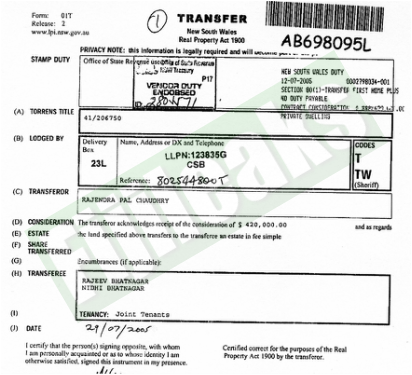
FIRCA had ordered its investigating officers to establish whether the source of the investment deposit were not from proceeds of crime. It emerged from my investigations that he had secretly received $2million into his account from India, of which $700,000 was secretly put into his account by the Government of India’s Consulate-General in Sydney.
One Harbhajan Lal of Haryana into three lump sums transacted the money. The amount of $503,000 and $486,890 was transferred on November 1, 2000 and February 22, 2001 respectively, when Mahendra Chaudhry held the Haig Street, Bexley address and $514,148.50 was deposited through the Indian Consulate-General in Sydney on April 4, 2002, as revealed in the Commonwealth Bank of Australia Bank statement bearing the address, 49 Bryson Street, Toongabbie address.
The bank statements on the above address also revealed other huge deposits running into thousands of dollars and well as huge withdrawals and shopping expenses etc to the same postal address, including the $50,000 gift to his daughter, and withdrawals of $800,000, $100,000, $469,000 and $380,000.
The last closing balance on the above Sydney address between 5 December 2003 and 7 January 2004 revealed a closing balance of $46,594.78.
At the time of my investigation in 2008, the Sydney property was owned by a Bhatnagar who had purchased it from Rajendra Chaudhry for a sum of $420,000.00 on 29 July 2005.
Rajendra Chaudhry purchased the property on 27 August 2001 from one Mooney for a sum $ 274,000.00. The Transfer is marked first home plus which would indicate that no stamp duty was payable for this purchase.
The mortgage document shows that the mortgage was of $ 246,600.00 and the duty paid on that mortgage was $ 696.75. That would mean that he would have paid the 10% deposit of $28,000.00 and borrowed the 90% amounting to $246,600.00.
According to the historical search of December 2004 he discharged the original mortgage and entered into a new mortgage for $325,000.00. The Upstamping should have been on $246,600.00 not on $ 297,000.00.
As this would be regarded as a refinance the duty is only paid on the extra amount of money that you borrowed. It was a refinance with the same mortgagee.
Some seven months later on 29 July 2005 he sold the property for $420,000.00. His mortgage would have been paid out at the time of sale
Rajendra Chaudhry had claimed that allegations of tax evasion against his father were politically motivated.
In reducing the charges Justice Goundar disclosed the following regarding Mahendra Chaudhry’s affidavit before him: “The applicant says that after the political upheaval in 2000, the Australian government offered him and his immediate family members, permanent residency visas. It appears that the applicant did not take on the Australian residency offer.”
But if so, who has been enjoying the millions he had secretly received from India after the failed George Speight coup, the millions of dollars which he was hiding in his Australian bank account until I exposed it in 2008?

